World
12 of the world’s most fascinating abandoned buildings
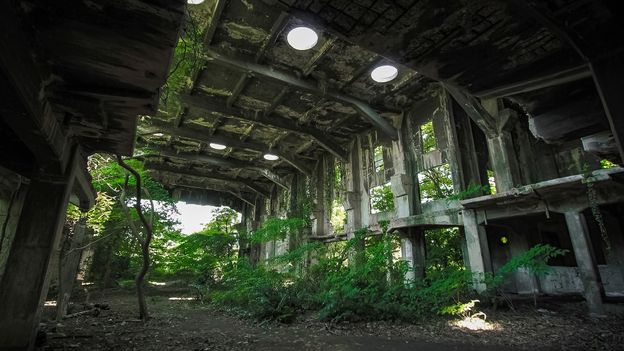
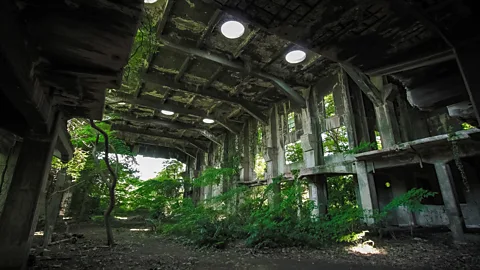 Ikumi Nakamura
Ikumi NakamuraStriking photos of disused locations across the globe, from derelict shipyards and military bases to colossal cooling towers and empty hotel resorts.
When it comes to must-see buildings, some might think of the Eiffel Tower, the Colosseum, the Taj Mahal or St Paul’s Cathedral. Yet for a certain breed of explorer, these famous landmarks hold little appeal. Instead, their architectural wish-list includes lesser-known landmarks: abandoned factories, boarded-up amusement parks, uninhibited villages and desolate power plants.
Urban Exploring – also known as Urbex – involves visiting abandoned and dilapidated buildings, places that are all but forgotten except for a small group of adventurers who purposefully seek them out. These buildings were once full of life – schools, theatres, holiday resorts, workplaces – but now sit empty, vegetation encroaching on their structures.
They’re the kind of places you might see in video games. So it makes sense that one renowned Japanese video game creator is also a keen urban explorer herself. Ikumi Nakamura has been exploring abandoned and uninhabited places across the world for two decades. A new book, Project UrbEx, chronicles her adventures, featuring incredible photographs of derelict, decaying and yet strangely beautiful locations. “My journey into urban exploration began with an abandoned hospital in the heart of Osaka, Japan,” Nakamura tells the BBC. “The thrill of sneaking into the abandoned building, the rich history etched into its walls, and the adrenaline rush of the unknown captivated me instantly.”
For her, Urbex offers a blend of history and mystery that traditional attractions can’t match. “These locations are time capsules, preserving moments of the past in a raw and unpolished state,” she says. “As an artist and photographer, I find beauty in the decay, the graffiti, and the remnants of past lives – they all tell stories that are often overlooked. Nakamura originally created an alter-ego, “Tommy”, for her Urbex adventures, covering her face with a gas mask so no-one would know it was her and publishing her adventures on a blog, Tomboy Urbex.
Urbex is a risky pursuit. Buildings are often difficult to reach, falling apart and can be located on private property. Online communities share advice for exploring buildings safely – and finding them in the first place. “Finding these hidden gems often involves a mix of research and serendipity,” says Nakamura. “I scour urban exploration forums, social media groups, and old maps for clues. Sometimes, it’s just about following a hunch or a tip from fellow explorers.”
It can be challenging photography. “The possibility of encountering security guards, wild animals, or even unstable structures can be daunting,” says Nakamura. “Some places also have an eerie, haunted feel. The silence, the creaking floors and the shadows playing tricks on your mind add to the thrill. But it’s this very mix of fear and excitement that makes the experience so captivating.”
Over the years she’s visited sites in Europe, Asia and the United States, juggling her travels with both motherhood and her job as CEO of video game studio UNSEEN.
“Urban exploration has had a profound impact on my work as a video game creator,” she says. “The abandoned places I explore add genuine depth and richness to my level design, environmental art and world-building. The stories I uncover, the atmospheres I experience, the smells and sounds, and the characters I meet all find their way into my games, creating immersive and captivating worlds for players to explore.”
Here are a few of the locations she has visited.
 Ikumi Nakamura
Ikumi NakamuraSattler Theater, Buffalo, New York
Commissioned by local department store mogul John G Sattler, this 928-seat Beaux-Arts style theatre opened in 1914. In the 1960s it became a mosque, visited by Malcolm X, but by the 1990s it stood abandoned. “I found the Sattler standing alone on a city block that was mostly grassy weeds,” says Nakamura. “The handsome brick buildings that would have formed the street it was built on have long gone, replaced by parking lots, storage units and gas stations.” Inside, a circular skylight illuminates the remains of this once grand building.
 Ikumi Nakamura
Ikumi NakamuraPackard Automotive Plant, Detroit
Once the thriving centre of the US auto industry, Detroit’s population has declined significantly since 1950, meaning the city doesn’t just have abandoned buildings – but entire empty neighbourhoods. “Detroit really is one of the most crumbling and yet beautiful cities I have ever seen, and one of the few places where almost an entire city packed up and moved elsewhere,” says Nakamura.” The Packard Automotive Plant (pictured) built cars from 1903 to 1958. After its closure, it became one of the largest abandoned buildings in the world. It’s expected to be totally demolished by the end of 2024, with plans for a brand-new automotive factory on the site.
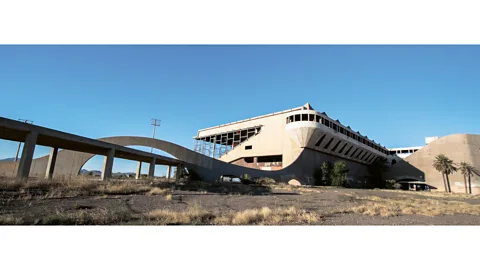 Ikumi Nakamura
Ikumi NakamuraPhoenix Trotting Park, Arizona
When it opened in 1965, this horse-racing track – in the middle of the Arizona desert – looked incredibly futuristic, but its own future was short-lived. The remote location and desert heat made it an impractical venue, and it shut after less than two years, standing abandoned for decades. “Walking around, it felt like being in a spaceship,” says Nakamura. She got there just in time. In 2015, the building’s owners tried to sell but couldn’t find a buyer and it was torn down in 2017.
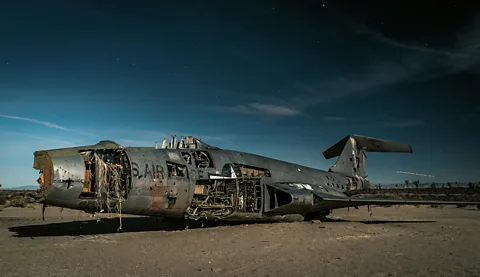 Ikumi Nakamura
Ikumi NakamuraIn a corner of the Mojave desert in California, just across from a US Air Force Base, stands a small, ghostly collection of old airplanes, including the remains of two B-52 bombers. “This is my favourite abandoned place and although I have visited three times, I am always thinking about making one more trip,” says Nakamura. “Standing next to these wrecked planes has become a mystical experience for me.” The F-101 Voodoo (pictured) was a long-range fighter that entered service in the 1950s. “This wreck looked less like a plane and more like a crash-landed spaceship.”
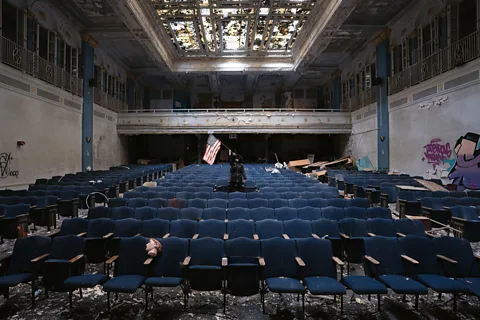 Ikumi Nakamura
Ikumi NakamuraHigh school auditorium, New Jersey
Although it’s now in a state of disarray, with graffiti covering the walls and smashed-up furniture, it’s not hard to imagine how impressive this vast auditorium must have once looked. “Even in the decayed state I found it in, I thought the auditorium was still absolutely gorgeous,” says Nakamura, pictured here inside the abandoned school in 2018. “Rays of light coming through a stained-glass ceiling made the royal blue seats glow.”
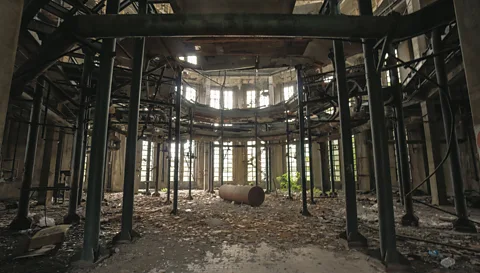 Ikumi Nakamura
Ikumi NakamuraItaly is known for its impressive buildings – but few would have an abandoned factory on their must-see list. Yet for Nakamura, who visited this former distillery in 2015 while on an Urbex trip exploring northern and central Italy, it was a magical sight. “It’s just a concrete industrial plant, yet somehow, Italian architects had built in some incredible design elements that made it so cool,” she says. The factory’s tower, and the “cathedral-like vastness” of its interiors, was especially impressive.
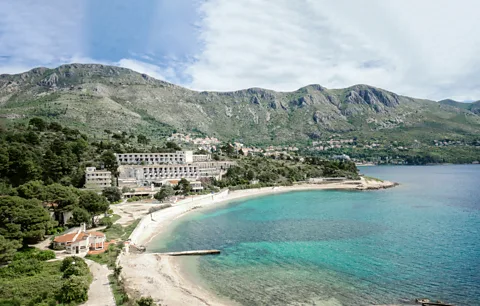 Ikumi Nakamura
Ikumi NakamuraKupari Bay Hotels, Croatia
From a distance, this collection of buildings on the beautiful Croatian coastline looks almost like any other Mediterranean holiday resort – but you won’t find any tourists here. “When civil war tore Yugoslavia apart in 1991, Croatian police took over this area, warships besieged the bay and this beautiful resort became rubble in the twinkling of an eye,” says Nakamura. Once a bustling, glamorous resort, the hotels here are now silent, save for the occasional crash of falling debris.
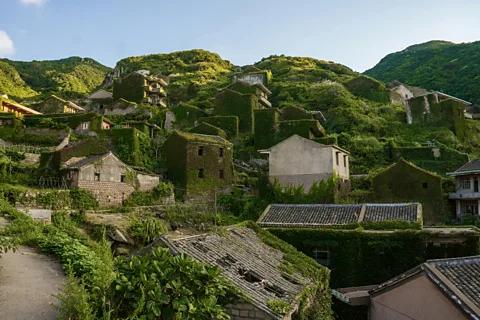 Ikumi Nakamura
Ikumi NakamuraHoutouwan fishing village, China
Though it was only built in the 1950s, the Chinese fishing village of Houtouwan on Shengshan Island is now deserted, with most of its once 2,000-strong population leaving in the 1990s in search of a better life. A small handful of families remained, meaning it isn’t quite a ghost town. The village has become something of a tourist attraction, largely thanks to its lush vegetation. “Ivy has covered many of the buildings so tightly, they seem to have been deliberately wrapped in greenery,” says Nakamura. “What a strange and unusual sight.”
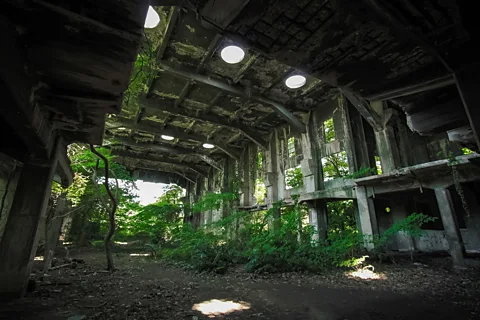 Ikumi Nakamura
Ikumi NakamuraImari Kawanami Shipyard, Kyushu, Japan
Kawanami Shipyard was one of the first places Nakamura visited as an Urbex explorer. Originally a glass factory, it became a shipyard and munitions factory during World War Two before closing around 1950. “You might think that abandoned places feel gloomy, but I remember this being the ultimate in decadent beauty,” says Nakamura. “Full of light, trees, the smell of fresh air. All human-made objects return to nature.” Instructions for workers can still be seen painted on the walls. “I could sense the men and women who built ships in wartime.”
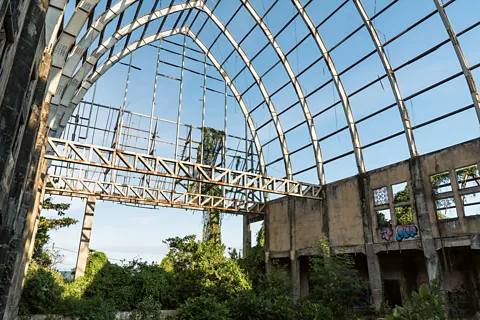 Ikumi Nakamura
Ikumi NakamuraTaman Festival theme park, Bali
Costing $100m to build in the 1990s, the Taman Festival theme park was set to change the face of tourism in Bali, with the country’s largest swimming pool, a huge rollercoaster and a 3D movie theatre. But it only opened to the public for a very short spell, before closing in 2000 – most likely due to the economic crisis in Asia. Its ghostly remains have spawned all sorts of urban legends, such as the park’s crocodiles being left to fend for themselves. It’s now a mecca for graffiti artists – and urban explorers. “The video game vibe was strong in this place, with the slightly artificial theme park settings blending in with the lush plant life to create perfect game zones,” says Nakamura.
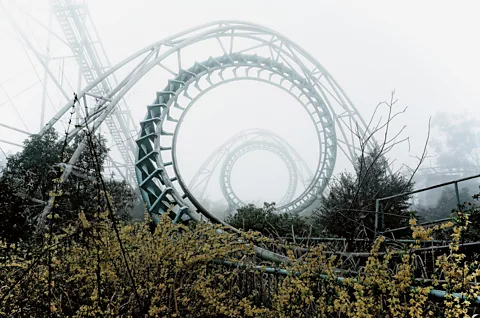 Ikumi Nakamura
Ikumi NakamuraNara Dreamland amusement park, Japan
When it opened in 1961, the Nara Dreamland amusement park was Japan’s answer to Disneyland, with a fairytale castle and a huge wooden rollercoaster – but when an official Disneyland opened in Tokyo in 1983, the park’s popularity quickly declined, closing for good in 2006. “The day I explored this site was so still and foggy, it seemed as though we were the only people left on the planet,” says Nakamura. In 2016 demolition began on the park, and now all that remains is a desolate plot of land. “I don’t think it deserved to be torn down, but this often seems the fate of many abandoned places.”
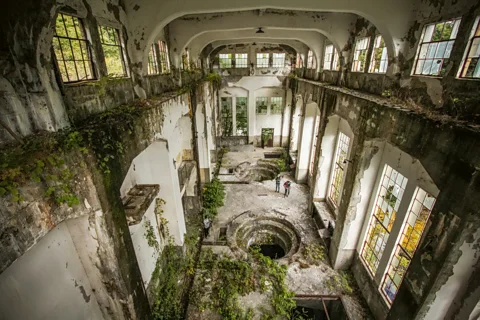 Ikumi Nakamura
Ikumi NakamuraWagakawa power plant, Iwate, Japan
“I am very fond of huge concrete buildings and there are not many abandoned industrial sites in Japan on the scale of this 1940s hydropower plant up in the mountains,” says Nakamura. She and her fellow explorers had to cross a river to reach it. Once inside the vast structure, the adventure continued, as she climbed into a 100ft tall hollow pipe. “I used a rotten metal ladder to reach the central atrium, stretching my legs across the gap like a ninja.” Perched precariously on the edge, she noticed a hornet’s nest close by. “In my experience, trying not to think about falling is the best way to avoid doing so.”
Warning: Urban exploration can be dangerous and could be considered trespass.


/static.texastribune.org/media/files/f5fdb1dff4d6fd788cba66ebaefe08d0/Paxton_GOP_Convention_2018_BD_TT.jpg)






